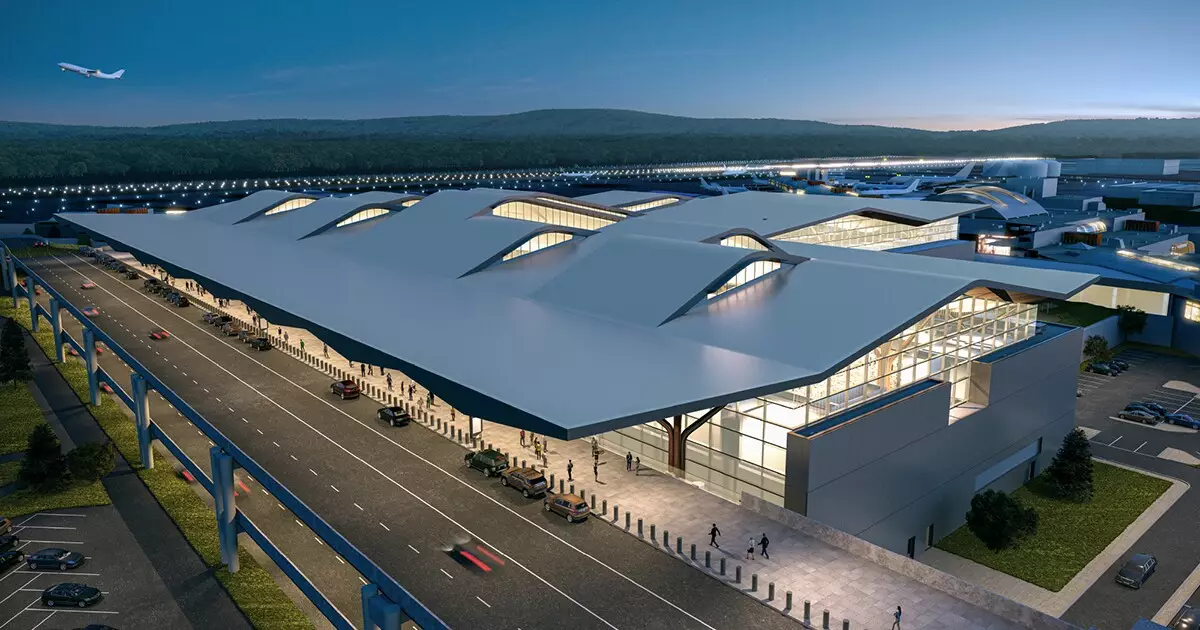As the world of aviation continues to evolve, the Pittsburgh International Airport (PIT) is undergoing a remarkable transformation that encapsulates a broader shift in the perception of regional transportation hubs. With a staggering $1.7 billion dedicated to modernizing its terminals, PIT is not merely reconstructing physical spaces; it’s reimagining its role as a cultural gateway, an emblem of local identity, and indeed—a beacon of modernization. This ambitious endeavor comes at a crucial time for Pittsburgh, a city striving to banish outdated stereotypes in favor of showcasing its vibrant tech scene and educational institutions.
The financial architecture supporting this venture, which includes a $421.9 million bond deal, illustrates a calculated risk, relying on the airport’s evolving nature. Originally built as a connecting hub, the reality is that more than 90% of today’s travelers are local. As CFO Eric Sprys aptly noted, the airport is no longer just a transitional spot for travelers; it must be a “new front door” for Pittsburgh, offering a warm welcome to visitors and a dignified farewell to its residents. Progress that reflects a city rather than an era.
Financial Nuances and Strategic Partnerships
The financial landscape surrounding the airport’s modernization project reveals underlying complexities. The bond deal being orchestrated involves tax-exempt and federally taxable bonds, rated A2 by Moody’s and A by Fitch Ratings, show an investment community willing to back this dynamic shift. However, the financing strategy is not without its challenges. PIT’s cost per enplanement is projected to exceed the average for A-rated airports—an indication that financial pragmatism must be juxtaposed with the ambitious vision.
Perhaps more critically, the airport’s historical financial maneuvers showcase its resilience. By untethering itself from its past financial dependencies and securing alternative revenue sources, PIT has cultivated a financial model responsive to modern demands. Natural gas revenues, which contribute about 4% of annual earnings, serve as a unique buffer, allowing the airport to weather economic unpredictabilities. Illinois’ experience with casinos illustrates just one of the unconventional methods through which airports can garner support—begging the question: As other facilities struggle, could Pittsburgh’s innovative approach serve as a blueprint for revitalization?
A Notable Shift in Identity
The aesthetic dimensions of the project have not been neglected. The new terminal seeks to eschew the dated, industrial image that Pittsburgh has carried since its steel production heyday. Instead, it aims to embody the progressive ethos of a city now defined by its technological and educational beacons. Sprys’ remarks about a terminal inspired by Pittsburgh’s stunning geography reverberate with the changing narrative. A roof invoking “the rolling hills of southwestern Pennsylvania” is not just a design choice; it’s a statement that Pittsburgh is no longer defined by its industrial past but by its modern intrigue.
The planned terminal amenities, such as outdoor seating areas and designs resembling the city’s numerous bridges, resonate as metaphors for connection rather than mere transportation links. This rebranding of the airport, shifting from a utilitarian space to a hallmark of community pride, is quintessential to its mission. It provides not only functional benefits but also historical and emotional resonance for a community ready for revitalization.
Learning from Tragedy and Triumph
PIT has indeed weathered more than its fair share of tumultuous times. The downturn post-9/11 and the subsequent exit of USAirways represented existential interests for the airport. Yet, it’s the ability to rebound and adapt that marks a successful venture. Drawing lessons from Cincinnati and Memphis, both of which have undergone similar transformations, PIT can extract vital insights into the delicate balancing act of remaining economically viable while expanding environmentally.
Today’s travelers increasingly expect more than just basic service; they crave experience, convenience, and a reflection of local culture imbued in their travels. Whether through a revitalized terminal or state-of-the-art amenities, the focus should always remain on enhancing the passengers’ journey—because in the end, an airport is not merely a facility; it’s an extension of a city’s soul.
The Pittsburgh International Airport’s transformative journey signifies so much more than brick and mortar; it’s a celebration of local identity, economic tenacity, and architectural innovation. With its unveiling on the horizon, the airport promises to redefine travel in a city that is, at last, ready to step into the brightness of its future.

